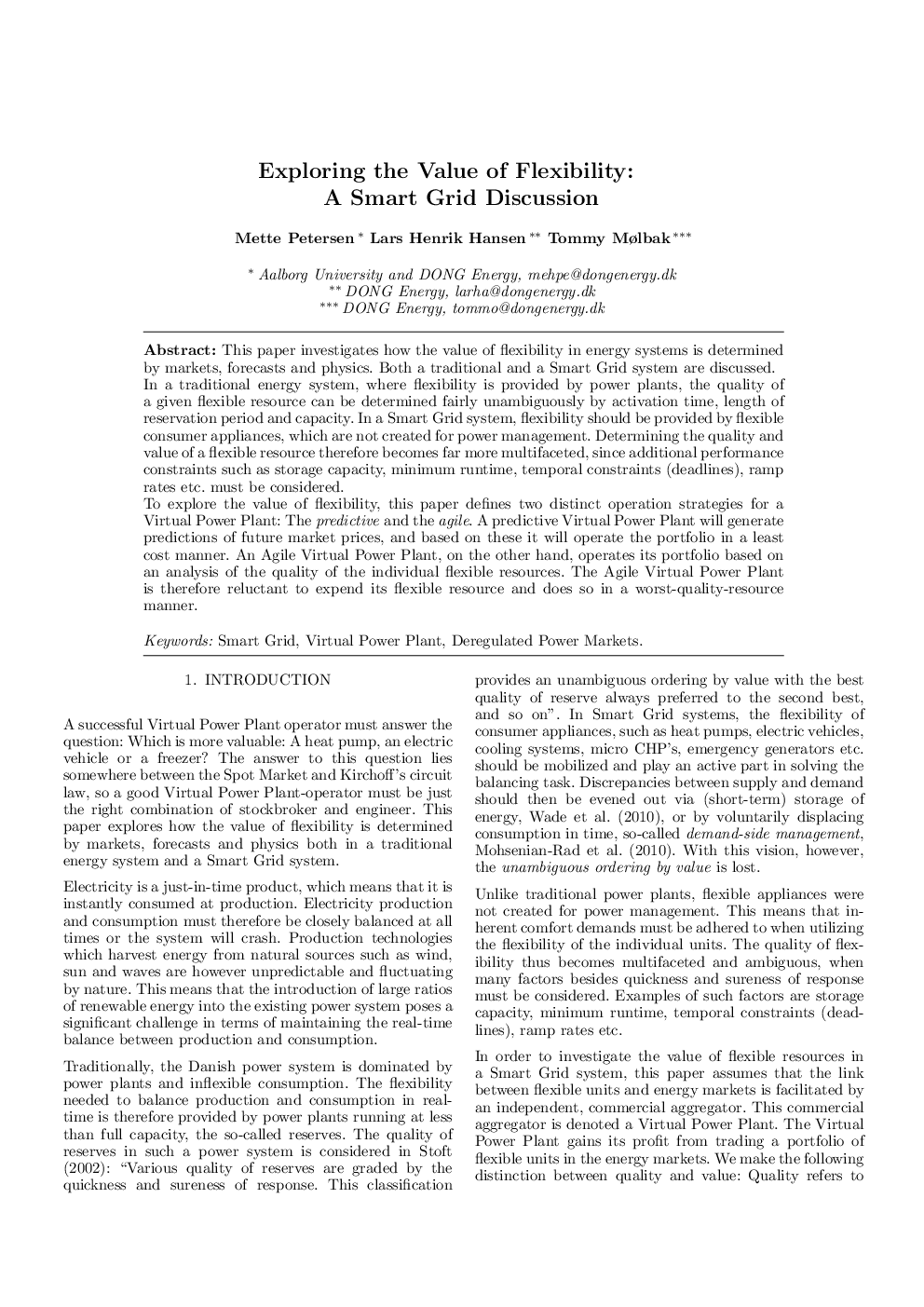| کد مقاله | کد نشریه | سال انتشار | مقاله انگلیسی | نسخه تمام متن |
|---|---|---|---|---|
| 716129 | 892217 | 2012 | 6 صفحه PDF | دانلود رایگان |

This paper investigates how the value of flexibility in energy systems is determined by markets, forecasts and physics. Both a traditional and a Smart Grid system are discussed. In a traditional energy system, where flexibility is provided by power plants, the quality of a given flexible resource can be determined fairly unambiguously by activation time, length of reservation period and capacity. In a Smart Grid system, flexibility should be provided by flexible consumer appliances, which are not created for power management. Determining the quality and value of a flexible resource therefore becomes far more multifaceted, since additional performance constraints such as storage capacity, minimum runtime, temporal constraints (deadlines), ramp rates etc. must be considered.To explore the value of flexibility, this paper defines two distinct operation strategies for a Virtual Power Plant: The predictive and the agile. A predictive Virtual Power Plant will generate predictions of future market prices, and based on these it will operate the portfolio in a least cost manner. An Agile Virtual Power Plant, on the other hand, operates its portfolio based on an analysis of the quality of the individual flexible resources. The Agile Virtual Power Plant is therefore reluctant to expend its flexible resource and does so in a worst-quality-resource manner.
Journal: IFAC Proceedings Volumes - Volume 45, Issue 21, 2012, Pages 43-48